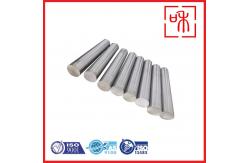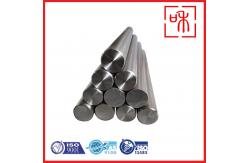ASTM Grade 5 Titanium Bars for Weight-Sensitive Applications
|
Introduction to ASTM Grade 5 TitaniumASTM Grade 5 titanium, also known as Ti-6Al-4V, is one of the most widely used titanium alloys in various industries due to its exceptional strength, lightweight properties, and corrosion resistance. Comprising approximately 90% titanium, 6% aluminum, and 4% vanadium, this alloy offers a unique balance of mechanical properties that make it suitable for demanding applications. The designation "ASTM" refers to the American Society for Testing and Materials, which establishes standardized specifications for materials, ensuring quality and consistency across different applications. This article delves into the characteristics, manufacturing processes, applications, and advantages of ASTM Grade 5 titanium bars and rods. Exceptional Mechanical PropertiesOne of the key features of ASTM Grade 5 titanium is its remarkable mechanical strength. With a tensile strength of around 900 MPa and a yield strength exceeding 800 MPa, it provides an excellent strength-to-weight ratio, making it particularly beneficial in industries where weight savings are crucial, such as aerospace and automotive. Additionally, Grade 5 titanium maintains its strength at elevated temperatures, allowing it to perform effectively in high-stress environments. This durability ensures that components made from this alloy can withstand extreme conditions without compromising their integrity. Furthermore, Grade 5 titanium exhibits excellent fatigue resistance, making it ideal for components subjected to cyclic loading. This property is critical in applications like aircraft frames and medical implants, where failure due to fatigue can have severe consequences. The ability to retain mechanical properties through various processing methods further enhances its versatility, allowing manufacturers to tailor the alloy to specific needs. Overall, the mechanical properties of ASTM Grade 5 titanium bars and rods make them a reliable choice for engineers and designers seeking high-performance materials. Corrosion Resistance and BiocompatibilityAnother compelling characteristic of ASTM Grade 5 titanium is its outstanding corrosion resistance. The alloy develops a protective oxide layer when exposed to oxygen, which prevents corrosion from various environmental factors, including seawater and acidic substances. This quality is particularly beneficial in marine applications, chemical processing, and other harsh environments where materials are prone to degradation. The longevity and durability provided by Grade 5 titanium significantly reduce maintenance costs and extend the lifespan of components, making it a cost-effective solution over time. In addition to its corrosion resistance, Grade 5 titanium is known for its biocompatibility, which makes it a preferred material in the medical field. Its inert nature ensures minimal adverse reactions when in contact with human tissue, making it suitable for orthopedic implants, dental fixtures, and surgical instruments. The alloy’s ability to integrate seamlessly with biological systems is crucial for successful medical applications, as it promotes healing while minimizing the risk of rejection. As a result, the use of ASTM Grade 5 titanium in healthcare continues to expand, driven by advancements in medical technology and patient care. Manufacturing Processes of Titanium Bars and RodsThe manufacturing of ASTM Grade 5 titanium bars and rods involves several advanced processes that ensure precision and quality. Common methods include forging, machining, and extrusion, each offering unique benefits depending on the desired application. Forging is particularly advantageous because it improves the alloy's microstructure, enhancing strength and toughness. This process refines the grain structure, resulting in a product that can withstand higher stress and strain. Machining allows for the creation of intricate designs and precise dimensions, which is essential for applications requiring high tolerances. Manufacturers often use computer numerical control (CNC) machining to achieve the required specifications, ensuring consistency across batches. Extrusion, on the other hand, enables the production of long, uniform bars and rods with specific cross-sectional shapes. This method is particularly useful for applications in the aerospace and automotive sectors, where tailored dimensions are critical. Each manufacturing process contributes to the overall quality and performance of Grade 5 titanium products, ensuring they meet the rigorous standards of various industries. Diverse Applications Across IndustriesThe versatility of ASTM Grade 5 titanium bars and rods makes them invaluable across a wide range of industries. In aerospace, they are used in critical components such as aircraft frames, engine parts, and fasteners. The lightweight nature of Grade 5 titanium contributes to fuel efficiency, which is a significant consideration in aviation design and engineering. Additionally, the alloy’s ability to withstand extreme temperatures and corrosive environments ensures the reliability of these essential components during flight operations. In the medical field, Grade 5 titanium is extensively utilized for implants, surgical tools, and prosthetics. Its biocompatibility and strength make it ideal for orthopedic implants, allowing for effective support during the healing process. Dental implants crafted from Grade 5 titanium benefit from its ability to osseointegrate, providing stability and durability. As technological advancements continue, the demand for Grade 5 titanium in healthcare is expected to grow, reinforcing its importance in improving patient outcomes. The automotive industry also recognizes the advantages of ASTM Grade 5 titanium, particularly in high-performance vehicles where weight reduction is vital. Components such as exhaust systems, connecting rods, and suspension parts benefit from the alloy's excellent strength-to-weight ratio, contributing to enhanced vehicle performance and efficiency. As manufacturers seek innovative materials to improve performance and reduce emissions, Grade 5 titanium’s properties position it as a viable option for future automotive applications. ConclusionASTM Grade 5 titanium bars and rods represent a cornerstone of modern engineering and manufacturing due to their exceptional mechanical properties, corrosion resistance, and biocompatibility. Their diverse applications across aerospace, medical, and automotive industries highlight their versatility and reliability, making them a preferred choice for many critical components. As technology continues to evolve, the demand for Grade 5 titanium is likely to rise, driven by the need for lightweight, durable, and efficient materials. Understanding the characteristics and benefits of ASTM Grade 5 titanium will enable industries to leverage its potential, ultimately advancing innovations and enhancing the quality of products across various sectors. Technical Parameters:
Applications:Orthopedic implants include artificial joints, metal plates,
orthopedic nails, metal orthopedic use rods, intramedullary nails,
bone needles, and spinal fixation devices. |
||||||||||||
| Product Tags: ASTM Grade 5 Titanium Bars Weight Sensitive Applications Titanium Bars Weight Sensitive Titanium Bars |
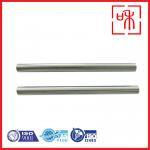
|
Grade 9 Gr9 Titanium Products Titanium Bars Alloy Round Bar For Industrial Applications |
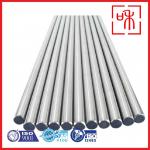
|
ASTM B348 Gr9 Titanium Bars Alloy Round Bar For Demanding Environments Purposes |
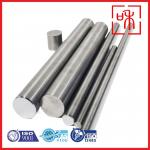
|
ASTM B348 Grade 5 Titanium Alloy Bar Titanium Bars Titanium Round Rod For Medical Purposes |
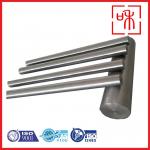
|
Grade 2 Grade 5 Titanium Alloy Bar Titanium Bars ASTM B348 Titanium Round Rod For Industrial Applications |
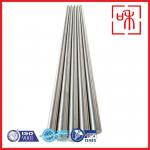
|
Titanium Alloy Bar Titanium Bars Sandblasted Titanium Bars Grade 7 ASTM B348 Titanium Round Rod |
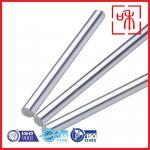
|
Metal Grade 12 Titanium Round Rod For Industrial And Medical Applications ASTM B265 |

